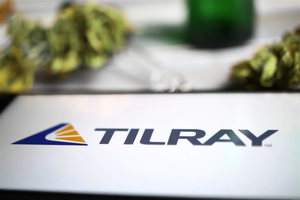The "Latin America Cement Industry Market Size & Forecast by Value and Volume Across 80+ Market Segments by Cement Products, Distribution Channel, Market Share, Import - Export, End Markets - Databook Q2 2025 Update" report has been added to ResearchAndMarkets.com's offering.
The cement market in Latin America is expected to grow by 7.7% annually to reach US$11.8 billion in 2025. The cement market in the region recorded strong growth during 2020-2024, achieving a CAGR of 8.5%. Growth momentum is expected to remain positive, with the market projected to expand at a CAGR of 7.2% during 2025-2029. By the end of 2029, the cement market is projected to expand from its 2024 value of US$11.0 billion to approximately US$15.6 billion.
This report provides a data-rich, forward-looking analysis of cement industry, covering market size, pricing trends, production, consumption, and segment-level performance from 2020 to 2029. It examines cement demand across key residential, non-residential, and infrastructure sectors alongside granular segmentation by cement type, distribution channel, end-user profile, and city tier.
A bundled offering, combining the following 6 reports (762 tables and 990 charts):
- Latin America Cement Business and Investment Opportunities (2020-2029) Databook
- Brazil Cement Business and Investment Opportunities (2020-2029) Databook
- Argentina Cement Business and Investment Opportunities (2020-2029) Databook
- Chile Cement Business and Investment Opportunities (2020-2029) Databook
- Colombia Cement Business and Investment Opportunities (2020-2029) Databook
- Mexico Cement Business and Investment Opportunities (2020-2029) Databook
Latin America's cement industry is undergoing an uneven recovery driven by public infrastructure spending, urbanization trends, and shifts in energy and carbon policy. While macroeconomic uncertainty and inflation have tempered private sector growth, government-backed housing and transport projects are stabilizing demand.
Leading producers are focusing on decarbonization, digital optimization, and supply chain localization to navigate fuel cost volatility and evolving environmental standards. Countries like Brazil, Colombia, and Mexico are expanding infrastructure investment, while others such as Argentina and Chile are managing economic headwinds. Firms that align with national infrastructure priorities and embed climate readiness into their operations will be best positioned to lead regional transformation.
Latin America's cement industry is undergoing structural recalibration, with demand increasingly tied to public infrastructure and green construction policy. While short-term risks persist around inflation, political stability, and energy pricing, firms that adopt sustainable production, secure regional partnerships, and digitalize operations will be positioned for resilience.
Strategic investments in clinker substitution, co-processing, and emission transparency are no longer optional but foundational. Leaders will emerge from those who can optimize regional capacity, align with ESG standards, and capitalize on infrastructure-led recovery. With policy stability and climate-aligned industrial planning, Latin America's cement sector can become a central player in building sustainable, inclusive growth across the region.
Infrastructure and Urban Housing Programs Are Supporting Cement Demand
- Brazil's PAC (Growth Acceleration Program) has revived cement demand through investments in roads, sanitation, and energy transmission. Colombia's 5G road concession program and infrastructure pipeline under the National Development Plan 2022-2026 are supporting bulk cement consumption. Mexico's Interoceanic Corridor and Tren Maya projects continue to boost regional cement volumes, particularly in southern and southeastern states. Peru's "Techo Propio" program and Colombia's VIS (Vivienda de Interes Social) segment continue to generate demand for bagged cement. Urban renewal initiatives in Chile and Ecuador are sustaining demand for ready-mix and specialized cements in low-rise and social housing construction. Commercial and residential project delays have persisted in Argentina and Chile due to high inflation and credit access constraints. Logistics hubs and warehousing construction in Brazil and Mexico remain more active, supporting demand for high-strength cement variants.
Sustainability-Focused Partnerships and Vertical Integration Are Increasing
- Votorantim Cimentos and CEMEX are leading CCUS (carbon capture, utilization, and storage) pilot projects in Brazil and Mexico, respectively. Several firms have committed to SBTi-aligned emissions targets and are working on low-clinker and alternative binder development. Cementos Argos and InterCement have increased RDF (refuse-derived fuel) and biomass use, reducing coal and petroleum coke dependency. Partnerships with municipal waste agencies in Colombia and Peru are facilitating co-processing scale-up. M&A activity and strategic capacity expansions are ongoing, especially in Brazil and Central America, to optimize plant utilization and regional distribution. Vertical integration into aggregates and ready-mix is helping offset margin pressure and improve logistics efficiency.
Production Faces Challenges From Energy Costs, FX Volatility, and Permitting Delays
- Energy cost surges in Argentina, Chile, and the Dominican Republic have driven per-ton production costs higher, especially for older kilns. Companies are investing in solar PV and WHR (waste heat recovery) systems to mitigate grid price exposure. Weaker local currencies in Argentina and Colombia have increased costs for imported clinker, gypsum, and equipment. Several expansion projects have been slowed or reprioritized due to FX-related cost escalations. Stricter environmental reviews and community opposition are delaying new quarry licenses and co-processing permits in Brazil and Ecuador. Firms are increasing transparency and ESG reporting to mitigate regulatory and reputational risks.
Moderate Growth Outlook Driven by Public Spending and Sustainability Alignment
- Multilateral-backed infrastructure funding and climate adaptation initiatives are expected to boost cement usage in flood protection, transport, and water infrastructure. Brazil and Colombia are expected to lead in regional cement growth through 2026. Mexico, Brazil, and Chile have begun integrating lifecycle emissions and sustainable sourcing criteria in public tenders. Cement firms with low-carbon EPDs (Environmental Product Declarations) and blended cement portfolios are securing procurement preference. Surplus capacity in Brazil and the Dominican Republic is being routed to smaller Caribbean and Andean markets with short-term shortages. Trade flows are supported by regional proximity and port infrastructure, although currency and freight volatility remain risks.
Risks Remain High Across Political Stability, Carbon Regulation, and Input Supply
- Elections and leadership changes in countries like Argentina, Peru, and Ecuador have introduced delays in infrastructure disbursements and cement procurement cycles. Populist trade or tax measures can affect cement pricing and cross-border flows. Emerging carbon market frameworks in Chile, Colombia, and Mexico are increasing compliance requirements for large cement producers. Firms not investing in emissions tracking or clinker reduction face future procurement exclusion and reputational risk. Fly ash, slag, and petcoke imports from the U.S. and Asia remain critical in several markets, with logistics disruptions and price volatility posing challenges. SCM (Supplementary Cementitious Materials) sourcing innovation is slow due to limited domestic availability and regulatory constraints.
Scope
Cement Industry Overview
- Cement Production KPIs: Volume and Value
- Cement Consumption KPIs: Volume and Value
- Average Cement Price Trends: Tracked at overall and cement-type level
Cement Market by Type of Cement
- Portland Cement
- Blended Cement
- Specialty Cement
- Green Cement
Blended Cement Market by Subtypes of Cement
- Type IS(X) - Portland-Slag Cement
- Type IP(X) - Portland-Pozzolan Cement
- IL(X) - Portland-Limestone Cement
- Type IT - Ternary Blended Cement
Specialty Cement Cement Market by Subtypes of Cement
- Rapid Hardening Cement
- High Alumina Cement
- White Cement
- Sulfate-Resistant Cement
- Other Niche Specialty Cements
Cement Market by Key Sector
Residential Construction
- Multi-Family Housing
- Single-Family Housing
Non-Residential Construction
Commercial Buildings:
- Office Buildings
- Retail Spaces
- Hospitality Facilities
- Restaurants
- Sports Complexes
- Other Commercial Properties
Industrial Buildings:
- Manufacturing Units
- Chemical & Pharmaceutical Facilities
- Metal and Material Processing Plants
Institutional Buildings:
- Healthcare Facilities
- Educational Institutions
- Other Institutional Structures
Infrastructure & Other Construction
Cement Market by Distribution Channel
- Direct Distribution (B2B Sales)
- Indirect Distribution (Retailers, Dealers)
Cement Market by End-User
- Ready-Mix Concrete Producers
- Concrete Product Manufacturers
- Individual Consumers (Self-use)
- Other Industrial/Commercial Users
Cement Market by Location Tier
- Tier-I Cities
- Tier-II Cities
- Tier-III Cities
Cement Trade Dynamics
- Key Export Destinations
- Key Import Sources
Competitive Landscape: Cement Market
- Market Share Analysis of Key Players
For more information about this report visit https://www.researchandmarkets.com/r/jyto1v
About ResearchAndMarkets.com
ResearchAndMarkets.com is the world's leading source for international market research reports and market data. We provide you with the latest data on international and regional markets, key industries, the top companies, new products and the latest trends.
View source version on businesswire.com: https://www.businesswire.com/news/home/20250714862180/en/
Contacts
ResearchAndMarkets.com
Laura Wood, Senior Press Manager
press@researchandmarkets.com
For E.S.T Office Hours Call 1-917-300-0470
For U.S./ CAN Toll Free Call 1-800-526-8630
For GMT Office Hours Call +353-1-416-8900






